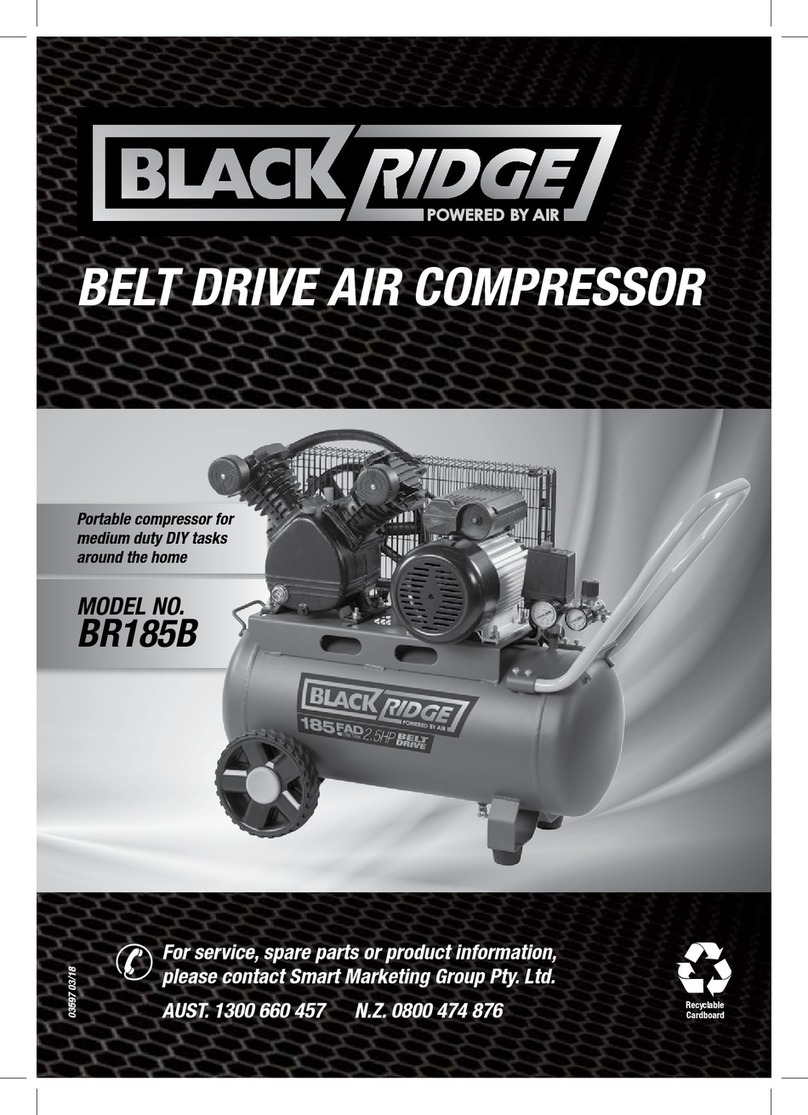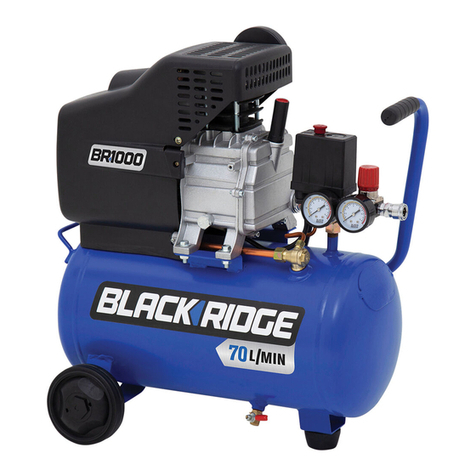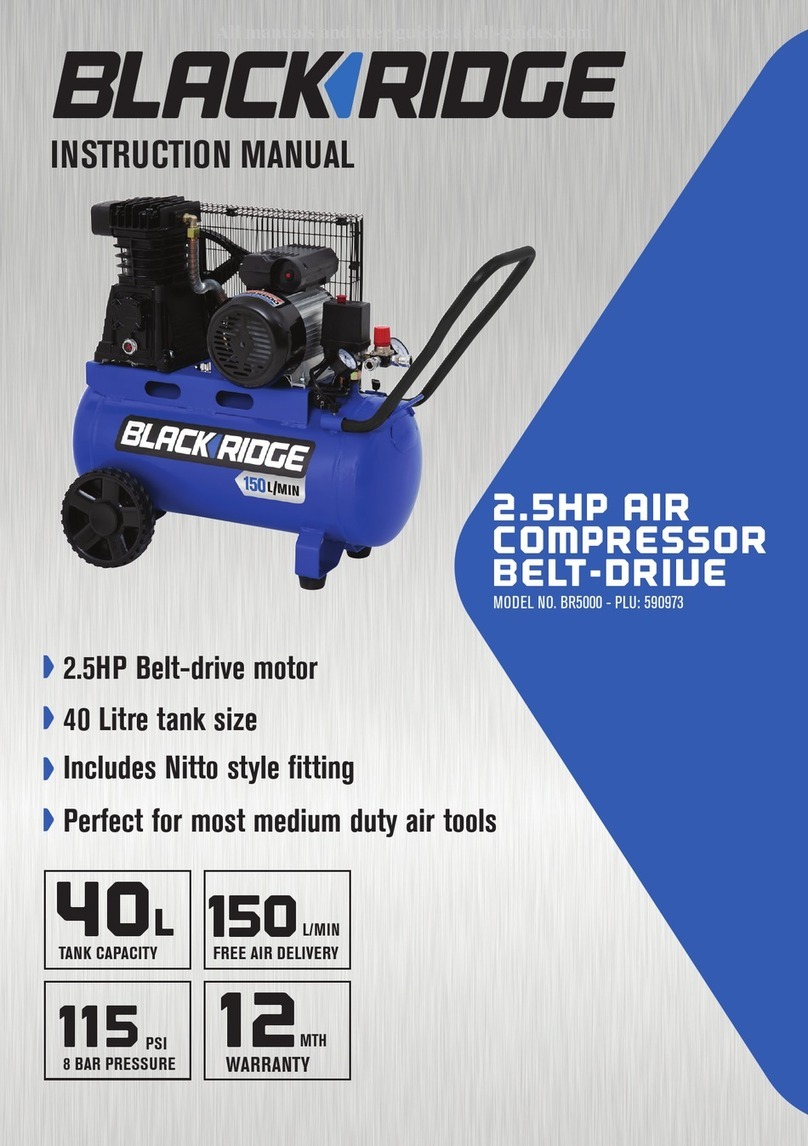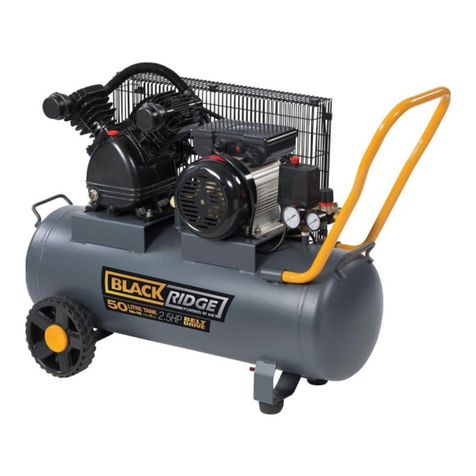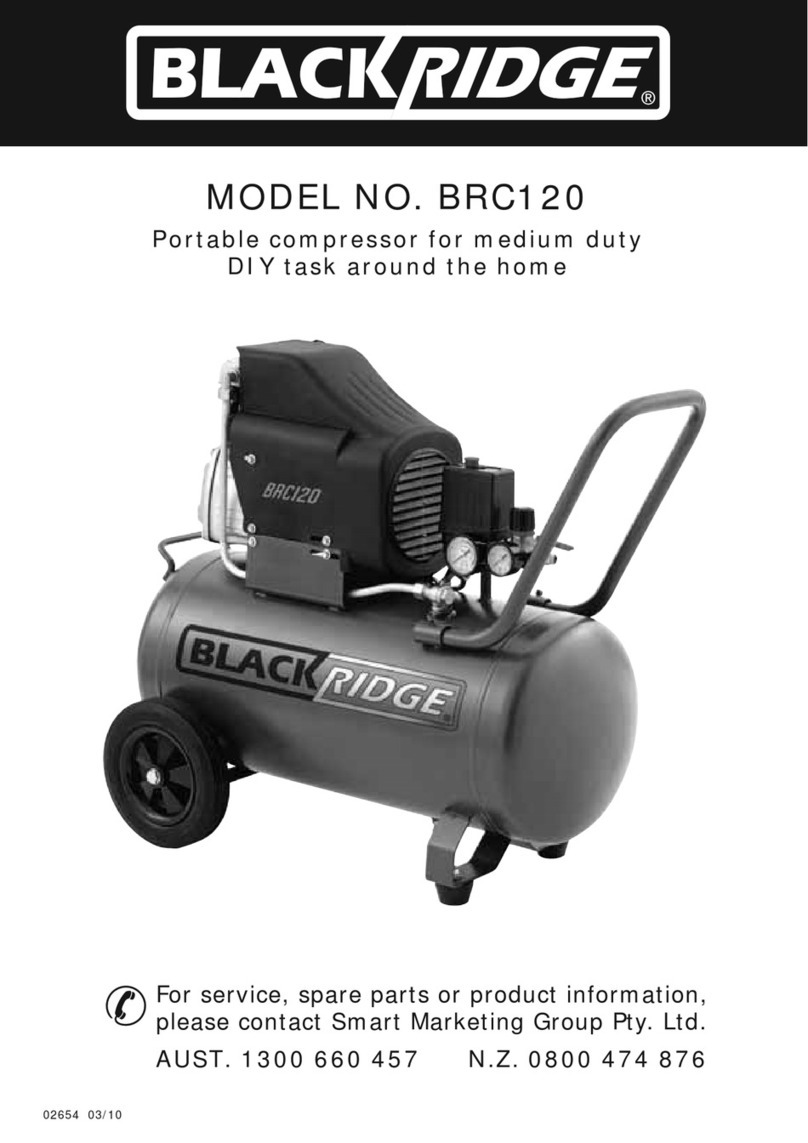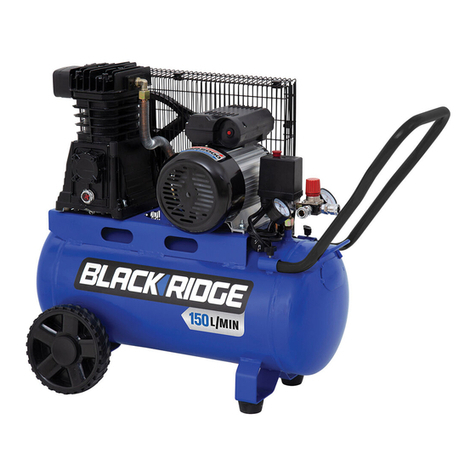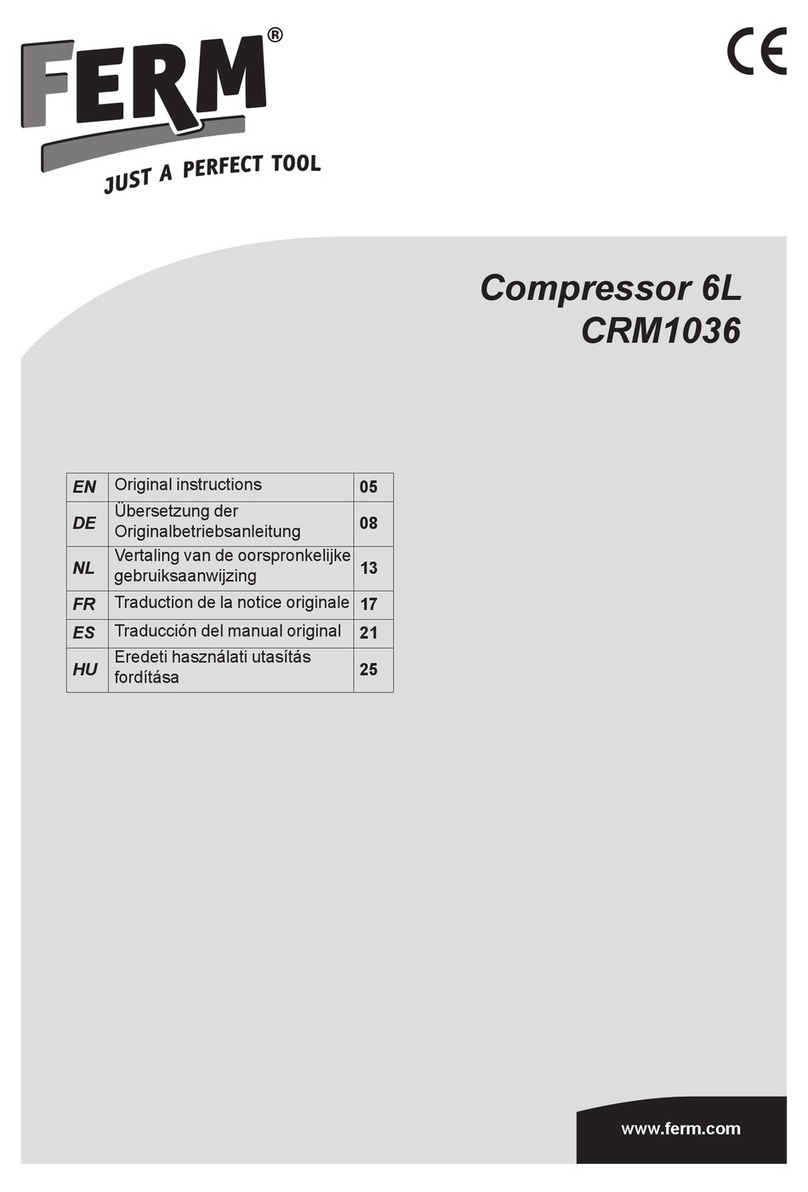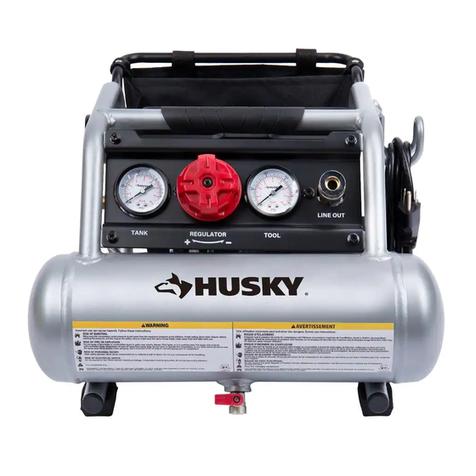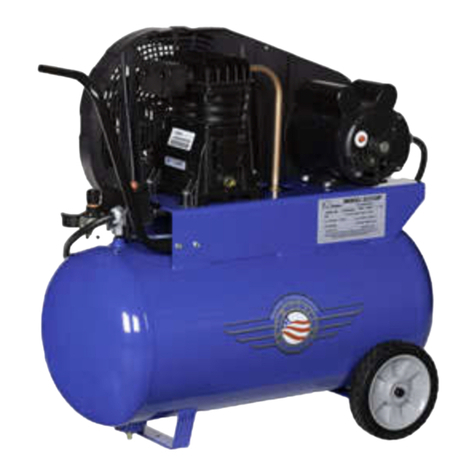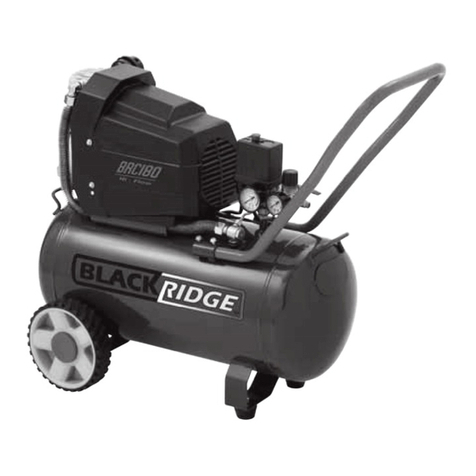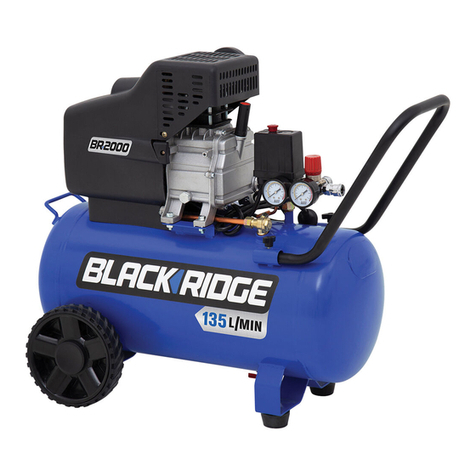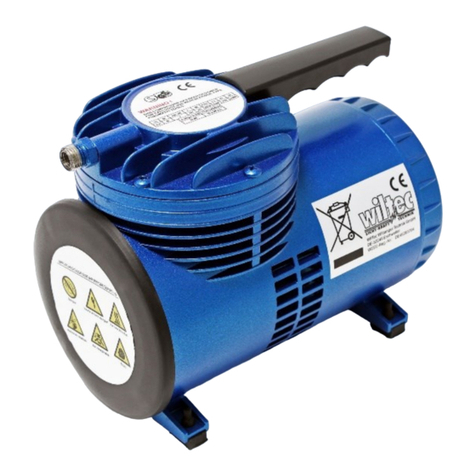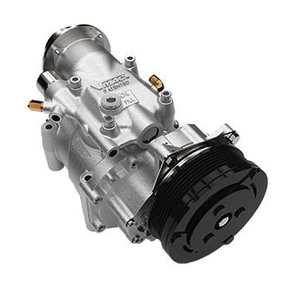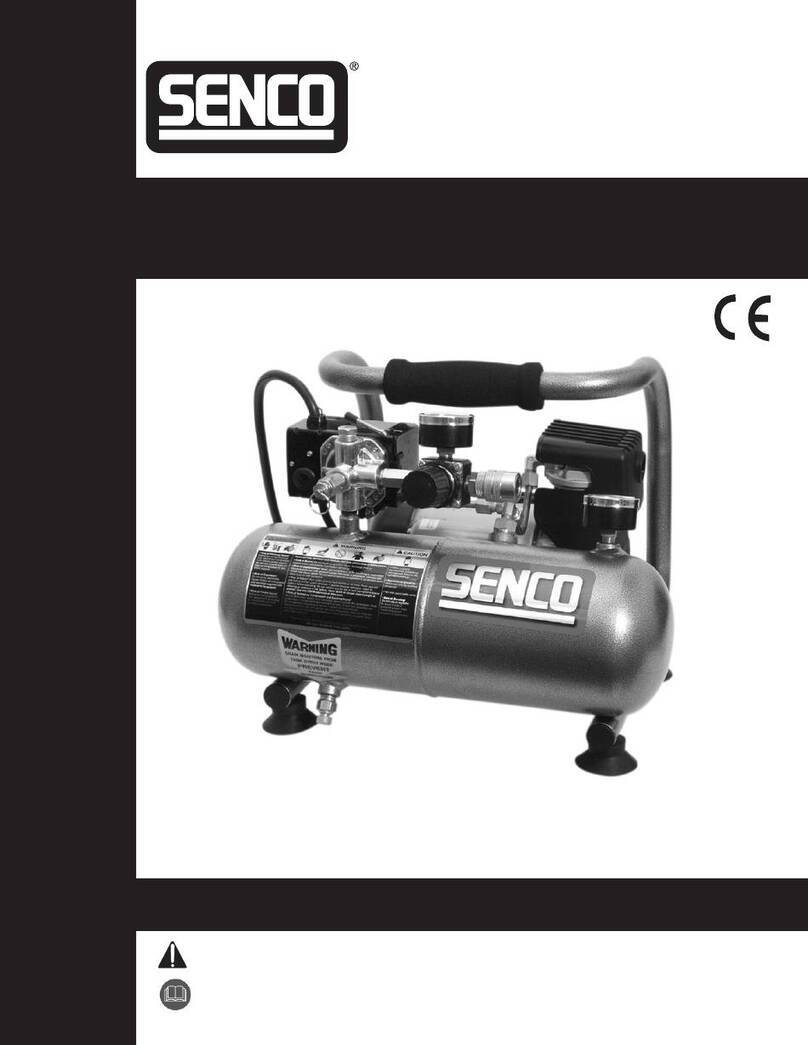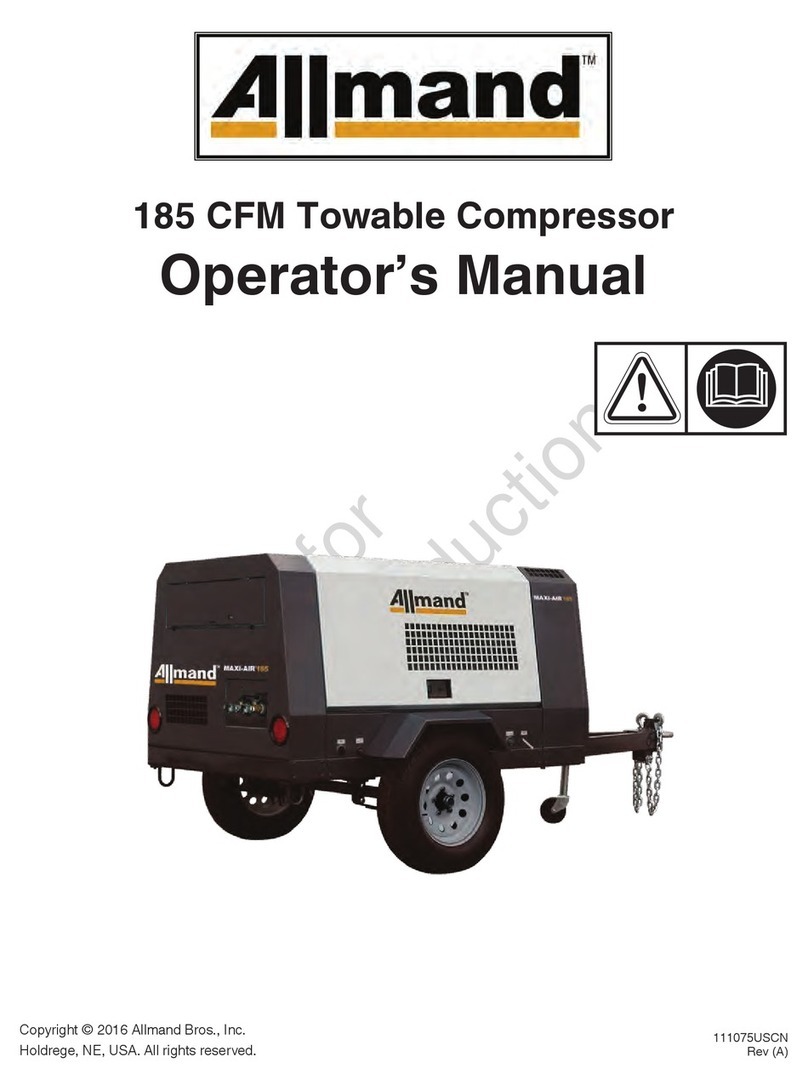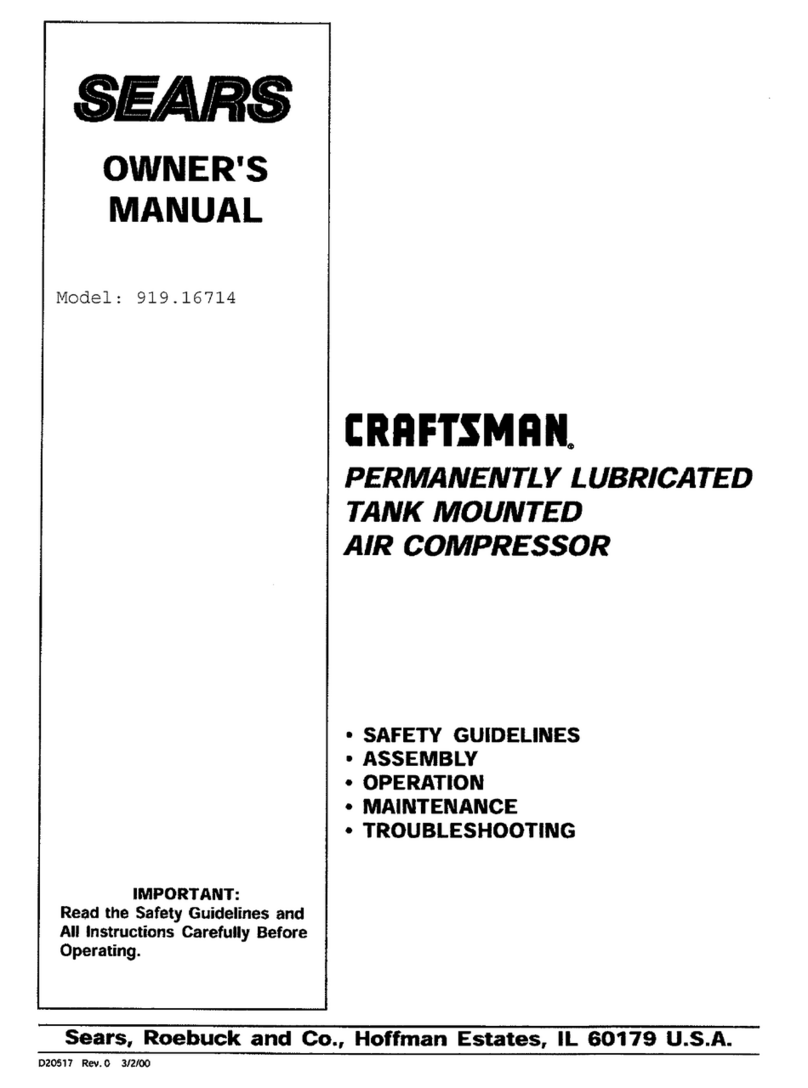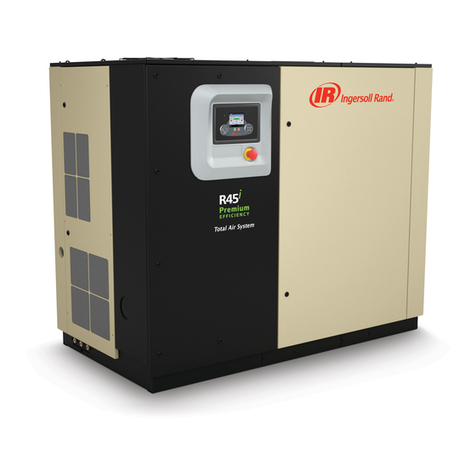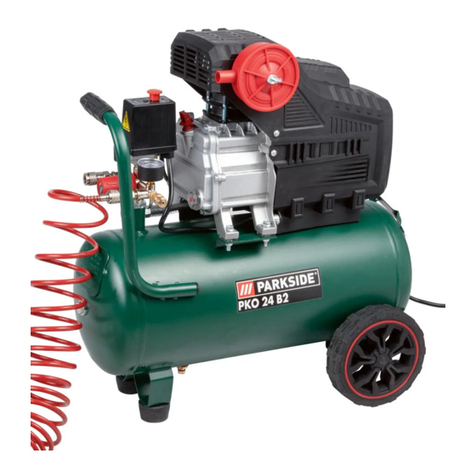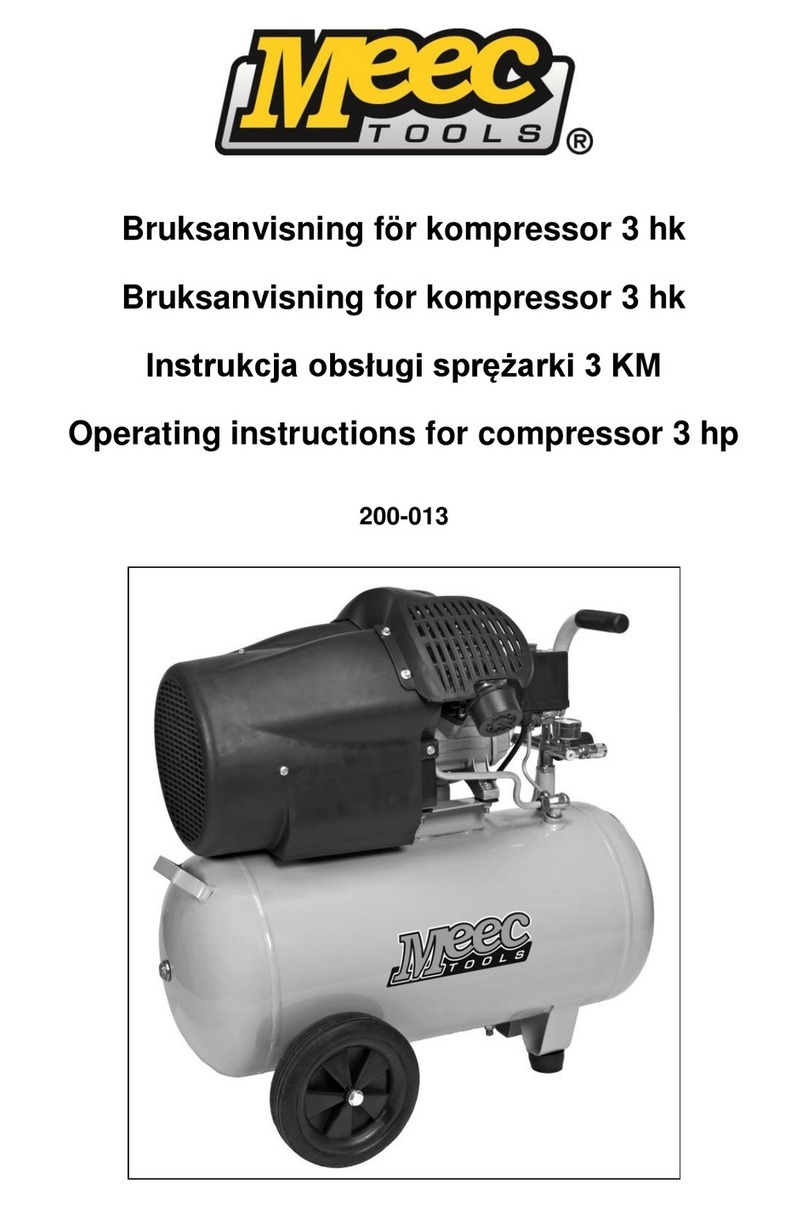
8
SPECIFIC SAFETY
INSTRUCTIONS
Warning! Do not use the air compressor in areas
where there is a risk of explosion or fire from
combustible materials. The sparks generated
from certain tools attached to air compressor can
ignite combustible materials as well as flammable
liquids, paint, varnish, petrol, flammable gases
and dust of an explosive nature. As a precaution
it is recommended that you consult an expert on a
suitable fire extinguisher and its use.
• Initially remove the transport plug and
replace with the oil breather BEFORE using
the first time, see page 10.
• Do not attempt to modify the air
compressor, guards or the supplied
accessories in any way.
• Domestic air compressors are designed for
intermittent operation. Ideally a 75% duty
cycle. (Meaning. 45 seconds ON motor
pumping and 15 seconds OFF, motor not
pumping). Simply put when the motor is
pumping the attached air tool can not be
used. Only use the attached air tool while
the compressor is not pumping.
• Stop using the attached tool as soon as the
air compressor starts pumping.
• Always check the oil level before use. Oil
level should be above the red dot on the
sight glass.
• Fully assemble compressor before use.
• Always ensure your compressor is level and
stable. Using your compressor on unlevel
or unstable ground may cause a lack of
lubrication and the pump to seize, this
damage will not be covered under warranty.
• Never run this compressor with the wheels
and rubber stopper being correctly fitted.
• Never use an extension cord with this
compressor always use a longer air hose.
• Never connect to a generator which does not
produce sufficient power, at least 3000W and
has pure sine wave power output.
• Domestic air compressors are not designed for
industrial / commercial applications.
• Domestic air compressors are not designed for
continuous running.
• Avoid touching the pump area as it can become
very hot and may burn.
• Ensure that the air compressor is disconnected
from the mains supply when not in use, before
servicing, lubricating, making changes and when
changing attachments such as air hoses / tools.
• Always use the correct type of tool for the
operation to be carried out.
• Never use the air compressor if any part of the
unit is damaged. Always have the air compressor
serviced by an authorised service agent.
• Always wear safety eye, ear and respiratory
protection when operating the air compressor.
• Allow the tank to completely fill before using the
air compressor.
• If the air compressor makes an unfamiliar sound
or vibrates excessively, switch the air compressor
‘OFF’ immediately and disconnect from the mains
power supply. Investigate the possible cause or
consult your authorised service facility.
• Always move the air compressor using the
handle and wheels.
• Always use the air compressor on stable ground.
• This air compressor is designed to compress
normal air. Never use to compress any other
type (s) of gases.
• Never direct the jet of air or other liquids / gases
towards your body, other persons or animals.
• Never direct the jet of air or other liquids / gases
towards this air compressor.
• This air compressor is not suitable for
pharmaceutical, food or sanitary purposes.
• This air compressor is not to be used to for filling
scuba or oxygen air bottles or tanks.
• Always follow the instructions relating to the
tools attached to this air compressor
ELECTRICAL DATA
IMPORTANT
This air compressor is fitted with a sealed electrical connection plug that is compatible with the
mains power supply for Australia / New Zealand and meets the requirements of international
standards. This air compressor must be connected to a supply voltage that is equal to that stated
on the rating label. If the mains power connection plug or power cord becomes damaged it must be
replaced with a complete assembly that is identical to the original, and this must be replaced by an
authorised service centre. Always follow the Australian / New Zealand requirements for connection
to the mains supply. If in doubt always consult a qualified electrician.





















